Over the past few years, the number (Count) of biomedical-sciences publications in the Nature Index has grown from a total of 16,000 in 2016 to 19,451 in 2021, a rise of 21.6%. The proportion of all Nature Index articles defined as being part of the field has also gone up, from 27.6% in 2016 to 28.4% in 2021. The latter part of this period was marked by the global health crisis of the COVID-19 pandemic. This had major implications for biomedical research as scientists raced to understand the SARS-CoV-2 coronavirus and develop vaccines at the same time as working under public health measures such as lockdowns.
Pandemic footprint
The percentage change in biomedical research Share in the Nature Index in some leading countries saw distinctly different trends during the first two years of the COVID-19 crisis. A number of nations had a large rise in Share from 2019 to 2020, which could be related to involvement in important early pandemic-related research. Such a boost could have contributed to a percentage fall for some nations the following year, as research volumes fell back to levels closer to those seen in pre-pandemic times. Some nations, however, such as China and Israel, continued to see a rise in Share in 2021 and others, such as India, dropped in 2020 but bounced back the following year.
Source: Nature Index. Data analysis by Catherine Cheung. Infographic by Simon Baker, Tanner Maxwell and Benjamin Plackett
Shifting profiles
The five leading countries for biomedical sciences Share from 2015 to 2021 in the Nature Index were the United States, China, United Kingdom, Germany and Japan. All have a rising proportion of publications featuring international collaboration, except China, where high-quality research has become more domestic. Biomedical sciences also makes up a much smaller proportion of China’s overall Share in the Nature Index.
Source: Nature Index. Data analysis by Catherine Cheung. Infographic by Simon Baker, Tanner Maxwell and Benjamin Plackett
Growth mind-set
Despite biomedical sciences making up a smaller slice of China’s overall research profile in the Nature Index (see chart above), the country’s institutions dominate those rising in Share from 2015 to 2021 and from 2020 to 2021.
Source: Nature Index. Data analysis by Catherine Cheung. Infographic by Simon Baker, Tanner Maxwell and Benjamin Plackett
Crossing borders
The top international biomedical partnerships in the Nature Index by bilateral collaboration score (their combined Share on publications to which they both contribute, shown by the dot) often include Harvard University in the United States. Harvard’s contribution to each score (shown by the bars) tends to be much higher than its partner.
Source: Nature Index. Data analysis by Catherine Cheung. Infographic by Simon Baker, Tanner Maxwell and Benjamin Plackett
Transferring ideas
Harvard University again features among the top academic–corporate biomedical partnerships in the Nature Index by bilateral collaboration score, but the top collaboration involves two Switzerland-based organizations, the University of Basel and international pharmaceutical company Novartis.
Source: Nature Index. Data analysis by Catherine Cheung. Infographic by Simon Baker, Tanner Maxwell and Benjamin Plackett






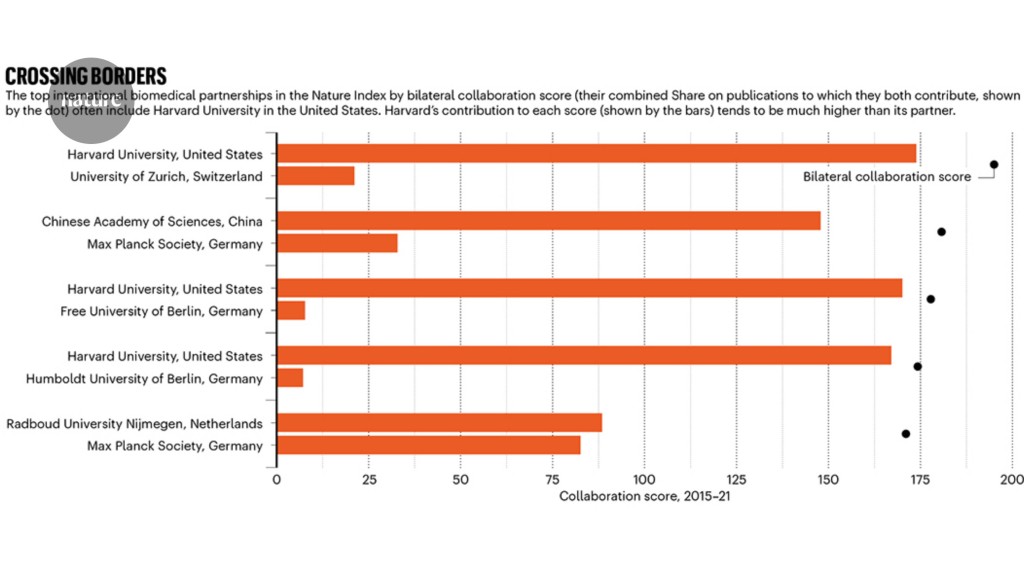
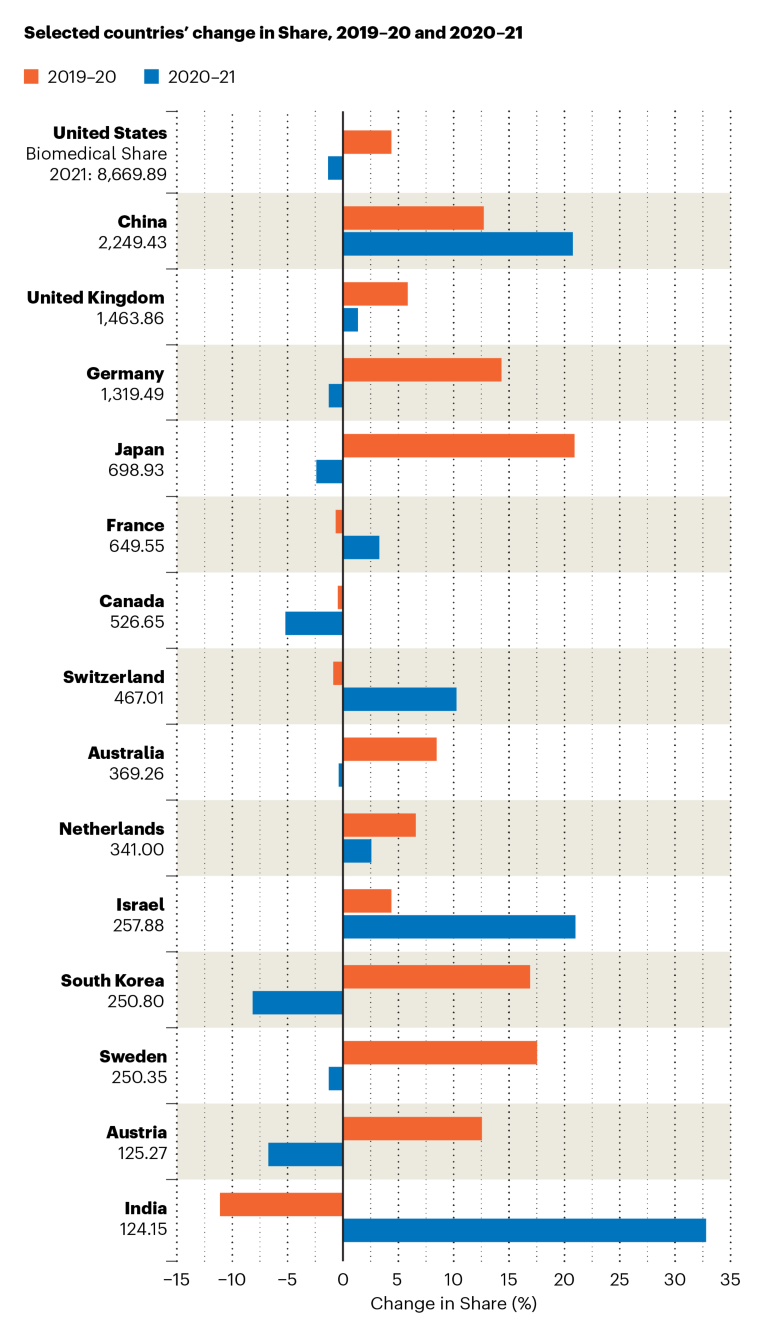
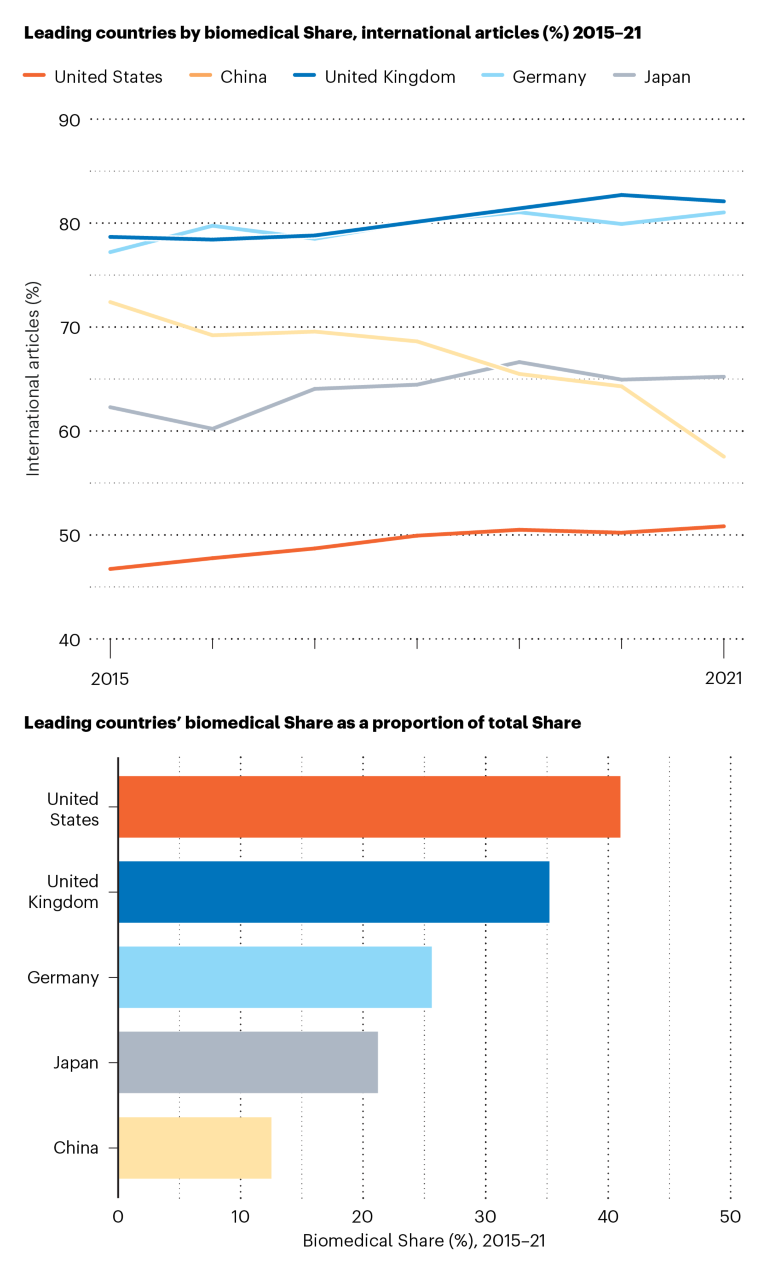
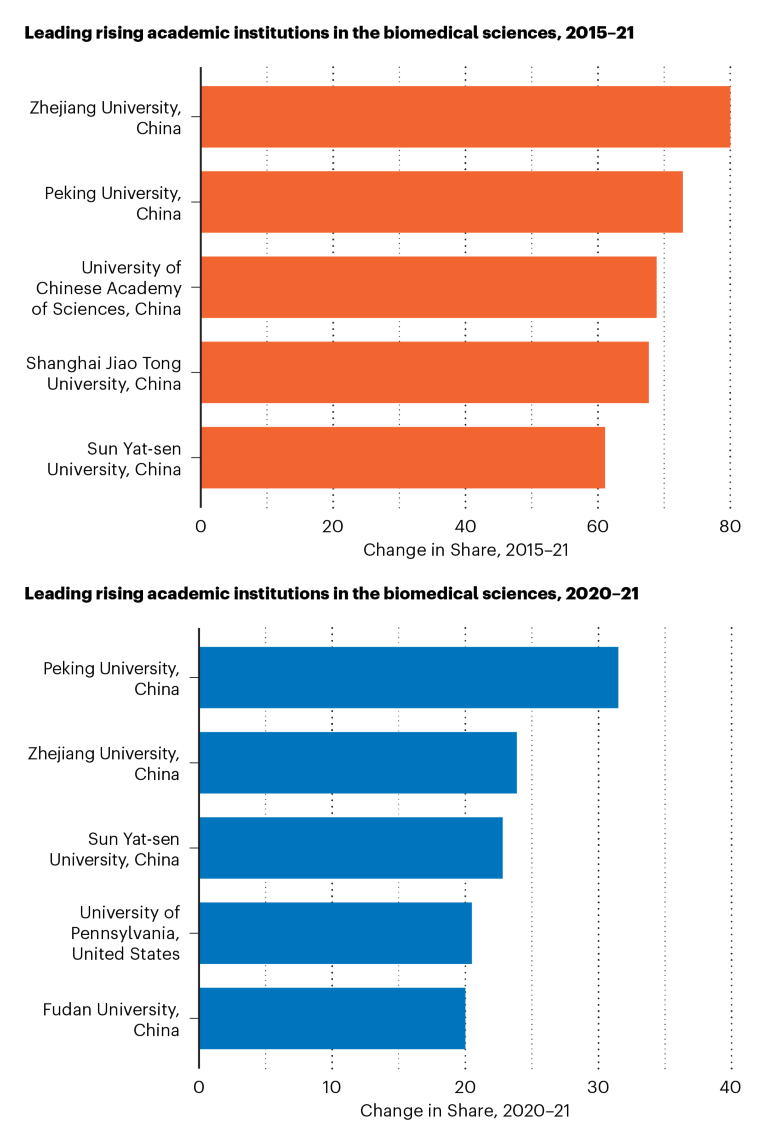
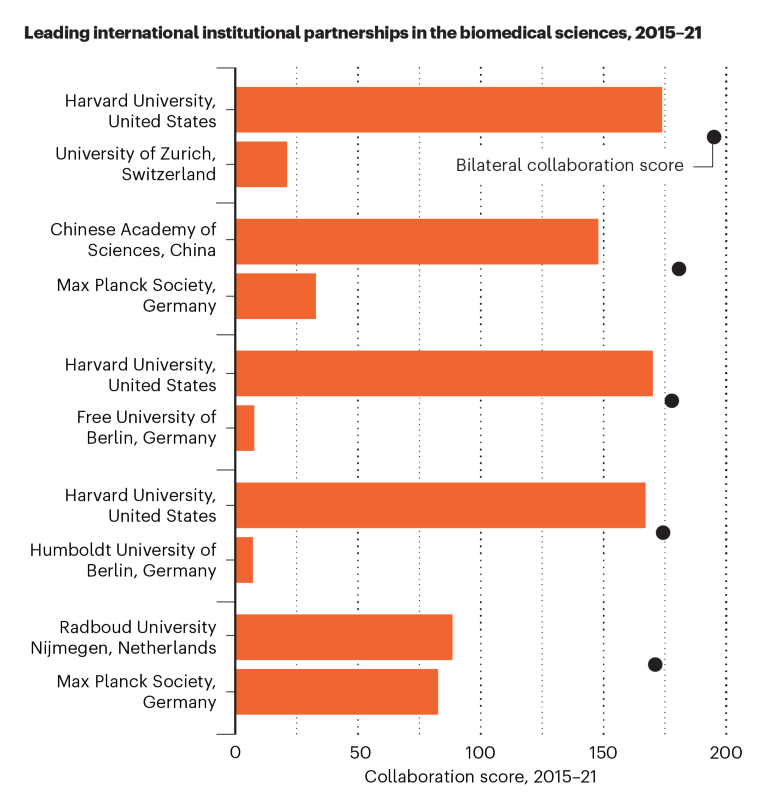
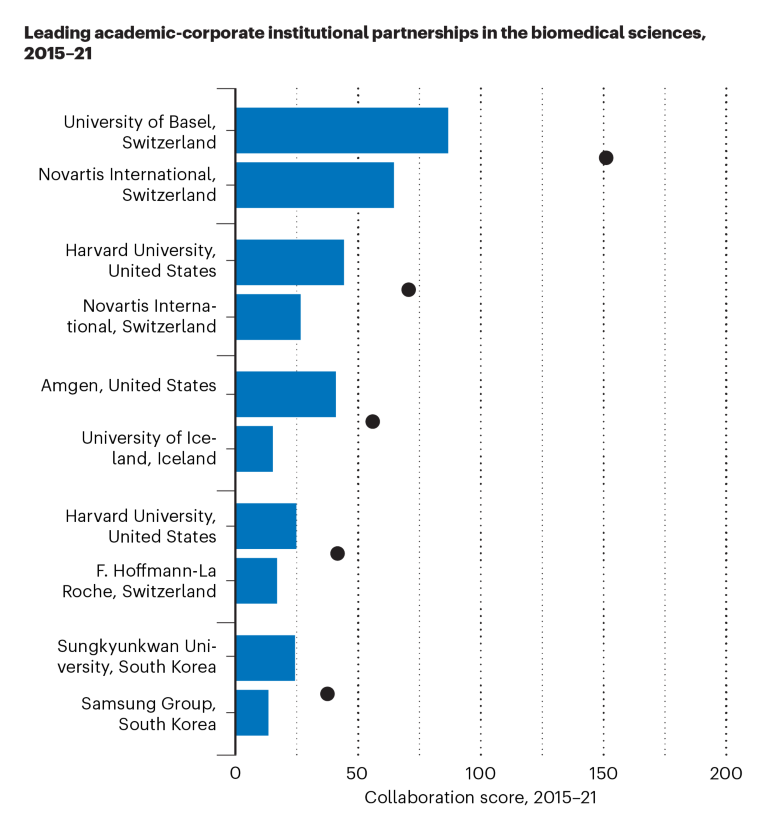
More News
Judge dismisses superconductivity physicist’s lawsuit against university
Future of Humanity Institute shuts: what’s next for ‘deep future’ research?
Star Formation Shut Down by Multiphase Gas Outflow in a Galaxy at a Redshift of 2.45 – Nature